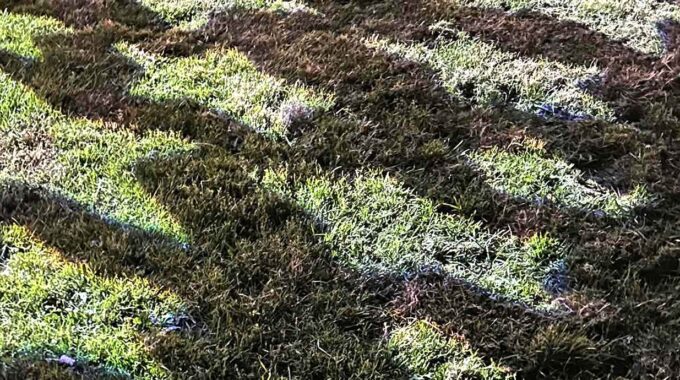Reading time: 5 min
by Alberto Aleo
One of the first corporate jobs I did, as a newly hired employee in the trade marketing department of a well-known motor vehicle manufacturer, was to analyse what our salespeople carried in their suitcases during their business trips, i.e. which materials they actually used to promote products and services. My boss back then wanted to understand what would be really useful to make the “value of the offer” reach the client in the clearest and most convincing way. What had originally seemed a minor job, in fact allowed me to take a very interesting and educational journey to discover both the sales stages, and the customer experience which is (or should be) linked to them. Here’s what happened…

Photo Jorge Vasconez on Unsplash
The Sales Book
The management’s goal was to create a collection of materials, documents and marketing tools – that we in the business called the “Sales Book” – which would prove useful to the sales agents to do their jobs more effectively.
The project was a success and eventually our “Sales Book” became a portal dedicated to sales professionals (which was a brand new thing in the early 2000s), where they could find all the information concerning the offer and also question market trends, draft estimates etc. However, it wasn’t easy at all. In order to create an effective architecture we had to consider all the modalities of engagement client/seller, trying to detect all the different moments and, if possible, to anticipate requirements, difficulties and mistakes.
Try to step into our shoes:
- What happens when salespeople meet customers?
- What are they going to talk about?
- What might they need to be more convincing?
- And what might be useful for the customers to understand and feel convinced?
In other words, a whole list of questions that needed answers. Like good “marketers” we had little or no sales experience in the field. We only had two possibilities: either imagining all the different situations from scratch. or… packing our own suitcases and accompanying some salespeople and closely observe their work.

Photo Rawpixel on UnSplash
The Diary of our Journey in Sales
Travelling with the sales team is one of the most educational experiences I have ever had and I highly recommend it to all those marketing agents who are filled with notions but distant from real business life, like I was at the time. Between strategy and practice there is normally a substantial gap, which is filled by the common sense, the instinct and the abilities of the individuals; however, without diminishing personal creativity, this gap can be managed and optimized through appropriate strategies and tools.
The best sales agents broke up their visits in different moments, which represented the different phases of the business relationship, each one with its particular objectives, specific challenges and special tools to overcome them.
Here is a quick overview of each phase:
- Pre-contact – In this phase we have to decide who we are going to visit and prepare for the meeting. The information and the tools provided by the company can help us both to organise the meetings and also to collect and analyse the data. Therefore we will need a list of potential clients, budgets, profiling studies, market data, agenda and planning tools.
- Initial visit to client – The first interactions with the clients are diplomatic activities more than actual sales activities. We need to get to know them and make ourselves known, but most importantly we need to break the ice and understand their requirements and postpone the real negotiation. In this phase we can use informational material, catalogues, gadgets or demo products we can leave to the clients so that they can examine them in detail. Also a form to write the business report following the visit.
- Following visits – During the continuation of negotiations we will have to present our offer and its price, maybe overcome some objections and clarify the details of our proposal. We might provide datasheets, comparisons with the competition, price lists and terms of sale, list of promotions, updated warehouse situation, delivery times.
- Client visit to the company – In the most complex negotiations the clients might visit the company and engage with technicians and colleagues who normally work “behind the scenes”. In this case we should take the opportunity to help them learn more about the structure and find their way around. We will need personal details of internal contacts, company presentation, case studies, organizational charts.
- Conclusion of the contract – The signing of the supply contract is the most bureaucratic phase of the sales process. For this reason we should keep on hand all legal information about approvals and supply conditions, user manuals, guarantee Also a format to draw up effective estimates and forms to take the orders.
- Follow up – If everything goes right, all we need to do is arrange the next steps of the customer experience, facilitating the handover to the colleagues who will take charge of the new client. Therefore we can provide internal contacts’ details, a list of service centres and any other information which might be useful in the after-sales phase.

Photo Adobe Stock
Marketing in support of Sales
Since I carried out that research, the creation of the “Sales Book” or – if you prefer – the study of the set of tools to include in the seller’s suitcase, has always been a fundamental activity for me.
A good sales book should be presented both in paper (sales agents are an old fashioned category) and digital format (perhaps in a private area of your company website).
The documents included should always be updated, and the “travelling” staff should always carry the latest version (and in case of updates available online, enable notifications for new releases).
– – –
Therefore if you still haven’t done it, I advise you to check what your sales agents usually carry in their suitcases and when and how they use these tools. On the one hand you will be able to suggest some adjustments to make their work more effective; on the other hand you will learn a lot about the different sales stages and, by observing their behaviour and that of their clients, you will manage to create materials that will suit their work best and that will really promote the customer journey.
– – –
Looking back at those moments, I realize that the Diario di un Consulente blog was born to be a long and open Sales Book, available for everyone who needs tools and advice to better manage their clients. That “minor job” also inspired the stages of the Sales Ethics method which, many years later, I codified with Alice Alessandri. Above all, thanks to that experience I discovered my passion for business activities which, shortly after, led me to try the job of seller giving me the opportunity to go on a wonderful trip I have never come back from.
| partem claram semper aspice |
The photos used - where not owned by the editorial team or our guests - are purchased on Adobe Stock and IStockPhoto or downloaded from platforms such as UnSplash or Pexels.
Did you like this post and want to learn more about the topics?
Passodue research on issues related to sales, marketing, ethics and the centrality of human beings within the market logic, officially started in 2012. The results derived from our work are described in the publications and in the books you can find in this section.





Comments (0)